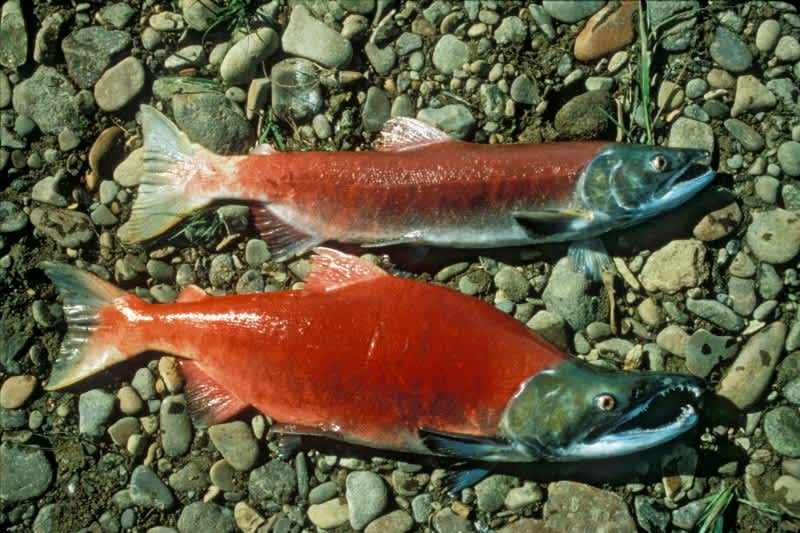Severe Drought Conditions Devastate Fish Populations on West Coast
OutdoorHub Reporters 08.03.15

High temperatures in the Pacific Northwest during late July and early August have biologists concerned about the health of sockeye salmon and other fish affected by the heat. Last month Oregon wildlife officials made the unprecedented decision to restrict fishing for salmon, trout, steelhead, and sturgeon. Several days later, the Washington Department of Fish and Wildlife (WDFW) also announced several new rule changes, along with increased efforts to minimize the effect of drought on fish at hatcheries.
“We’ve lost about 1.5 million juvenile fish this year due to drought conditions at our hatcheries,” said Ron Warren, WDFW salmon policy lead, in a press release. “This is unlike anything we’ve seen for some time.”
The normally cool Okanogan and Columbia rivers are unusually warm due to a combination of low mountain snowpack and near-record temperatures. Just as residents of Seattle are feeling the effects of a blistering heat wave, salmon are—almost literally—baking in the rivers. According to The Los Angeles Times, experts originally predicted that more than 400,000 sockeye salmon would reach “Brewster Pool,” a place where the Okanogan and Columbia rivers meet and one of the last stops before the fish cross over into Canada to spawn. Experts now suspect that a paltry 30,000 may survive the trip to the spawning grounds.
“We’re expecting these types of events to be more frequent,” Russell Bussanich, a fishery biologist with the Okanagan Nation Alliance, told the Times. “Between now and 2050, fisheries managers will have to change the way we do things on both sides of the border.”
Similar to their American counterparts, the British Columbia Ministry of Forests, Lands and Natural Resource Operations has also curtailed fishing, restricting anglers to just a handful of rivers in southern British Columbia.
So why are warm rivers so harmful to salmon and similar fish? At 70 degrees Fahrenheit, the water is simply too warm for sockeye to survive. Warm temperatures also increase the likelihood for disease and can reduce water levels, stranding fish in shallow pools. When the Okanogan River neared 80 degrees recently, fish were forced into deeper and deeper waters.
“When streams get too warm, fish are stressed and as a result the fishing goes downhill fast,” said Rick Hargrave, Oregon Department of Fish and Wildlife Information and Education Division Administrator, in a press release. “Fish stop biting or retreat to deeper, cooler water where they are harder to catch.”
USA Today reported that the current heat wave is expected to let up later this week, but drought conditions across the West Coast will continue to be a problem for fish.

